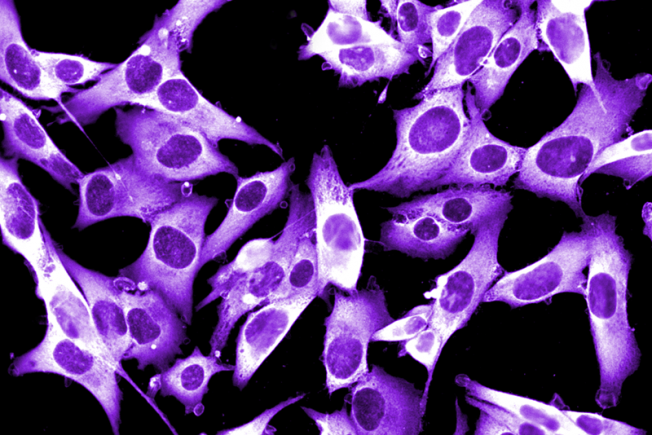Improving the predictive power of models for cancer research
At a glance
Contents

Overview
In 2015 in Great Britain, cancer research accounted for over 195,000 experimental procedures on animals [1]. This substantial level of research reflects the societal burden of cancer and the high level of funding this area attracts. Research into the origin and mechanisms of cancer pathology and cancer drug development has traditionally relied heavily on animal models, often mice [2-4], but often do not adequately reflect the development, maintenance and spread of cancer [5]. In addition, there are significant welfare burdens associated with these models [6].
Attrition rates in cancer drug development have increased [7] despite a steep rise in investment in pharmaceutical R&D [8]. Likelihood of success in clinical trials was lowest in oncology among all indications analysed, with cancer drugs showing just a 25% success rate in Phase II [9]. During this phase, development was most often stopped due to a failure to demonstrate efficacy, which can be traced back to a failure to correctly identify efficacy in animal models [10].
By supporting the development and uptake of human tissue- and cell-based technologies, human relevance can be improved while using fewer animals.
‘Minimising animal use in target-to-function biology in preclinical oncology research’ workshop
In response to this, the NC3Rs organised a workshop in 2015 “Minimising animal use in target-to-function biology in preclinical oncology research”, which brought together experts in in vivo and in vitro cancer modelling to explore how to improve preclinical predictivity to human and reduce animal use. The workshop report details the three main themes for the future:
- Collaboration and data sharing provide routes to increase relevance to the clinical situation.
- Investment in complex in vitro systems and the technologies required to support these will provide viable alternatives to animal modelling in cancer research.
- The use of human tissue and human-relevant cells has the potential to improve the predictive nature of cancer models.
Workshop Report: Minimising animal use in target-to-function biology in preclinical oncology research.
‘Human tissue models for cancer research’ workshop
In March 2017, the NC3Rs held a workshop on ‘Human tissue models for cancer research’, inviting speakers and delegates to interact and discuss the barriers to increased use of human tissue for cancer research, and how to overcome these barriers. Delegates identified the three main barriers to increased use of human tissue in cancer research as:
- Inadequate access to high-quality tissue with associated metadata.
- Technical difficulties in culturing tissue, often due to degradation during storage or transport.
- Reliance on animal modelling in cancer research and publications.
Workshop Report: Human tissue-based models to reduce animal use in cancer research: barriers and opportunities.
Visit our dedicated resource pages for: Increasing human tissue use.
References
- Home Office, Statistics of scientific procedures on living animals, 2015
- Gould, S.E., M.R. Junttila, and F.J. de Sauvage (2015) Translational value of mouse models in oncology drug development. Nat Med 21 (5): 431-9. doi: 10.1038/nm.3853
- Richmond, A. and Y. Su (2008). Mouse xenograft models vs GEM models for human cancer therapeutics. Dis Model Mech 1 (2-3): 78-82. doi: 10.1242/dmm.000976
- Hidalgo, M., et al. (2014). Patient-derived xenograft models: an emerging platform for translational cancer research. Cancer Discov 4 (9): 998-1013. doi: 10.1158/2159-8290.CD-14-0001
- van der Worp, H.B., et al. (2010). Can Animal Models of Disease Reliably Inform Human Studies? PLOS Medicine 7 (3): e1000245. doi: 10.1371/journal.pmed.1000245.
- Workman, P., et al. (2010). Guidelines for the welfare and use of animals in cancer research. Br J Cancer 102 (11): 1555-77.
- Williams, R. (2015). Discontinued in 2013: oncology drugs. Expert Opin Investig Drugs 24 (1): 95-110. doi: 10.1517/13543784.2015.971154.
- Scannell, J.W., et al. (2012). Diagnosing the decline in pharmaceutical R&D efficiency. Nat Rev Drug Discov 11 (3): 191-200. doi: 10.1038/nrd3681.
- Thomas, D.W., et al. Biotechnology Innovation Organisation (2016). Clinical Development Success Rates 2006-2015. Accessed on: 19/4/2017.
- Scannell, J.W. and J. Bosley (2016). When Quality Beats Quantity: Decision Theory, Drug Discovery, and the Reproducibility Crisis. PLoS One 11 (2): e0147215. doi: 10.1371/journal.pone.0147215.
Publications
- Workshop Report: Minimising animal use in target-to-function biology in preclinical oncology research.
- Workshop Report: Human tissue-based models to reduce animal use in cancer research: barriers and opportunities.
- Editorial: Jackson SJ, Thomas GJ (2017). Human tissue models in cancer research: looking beyond the mouse. Disease Models and Mechanisms 10: 939-942; doi: 10.1242/dmm.031260.
